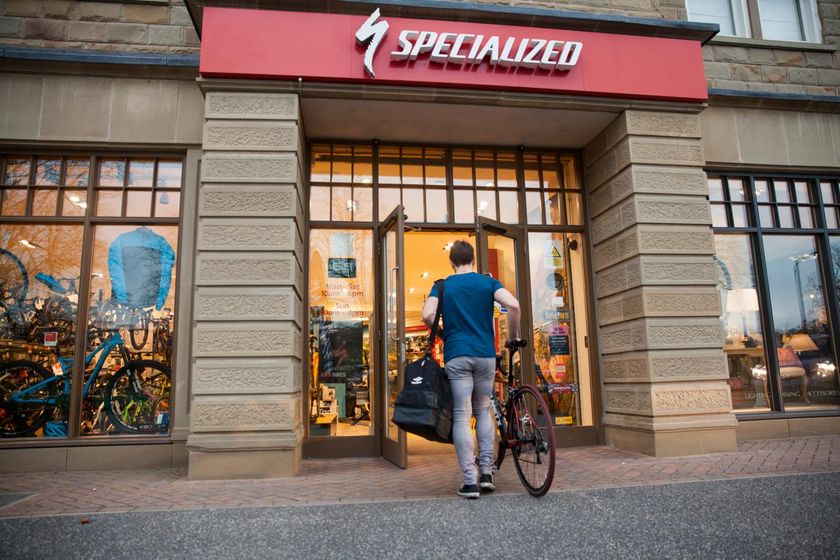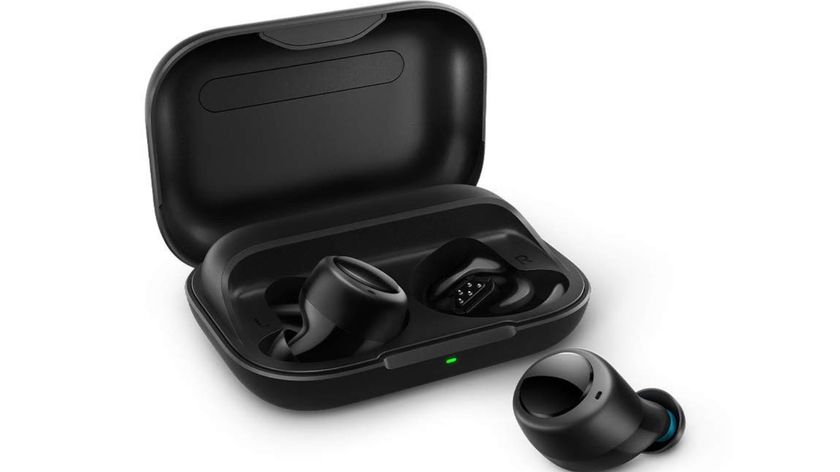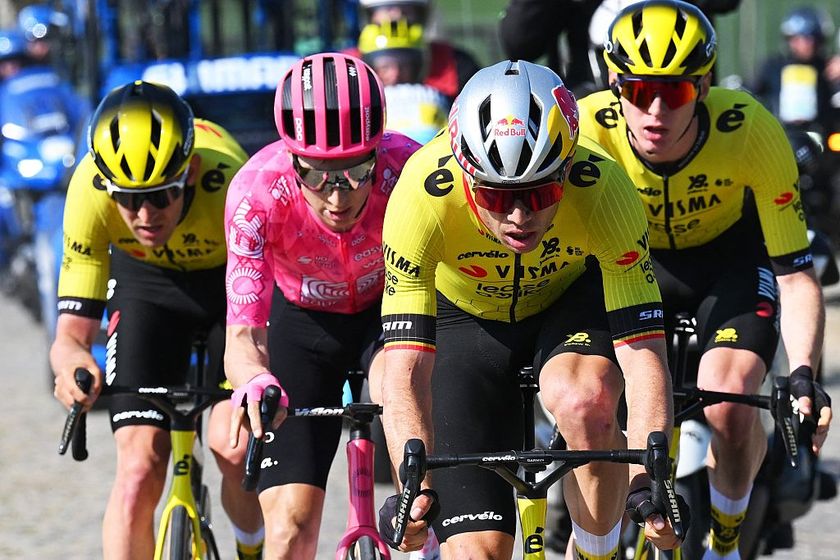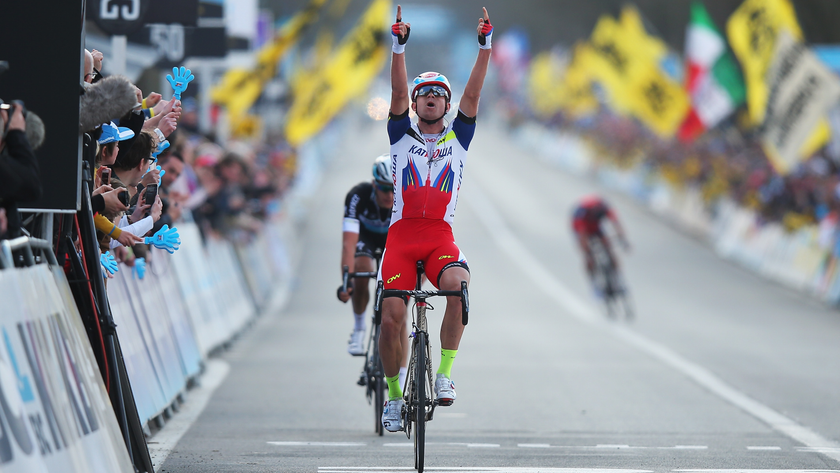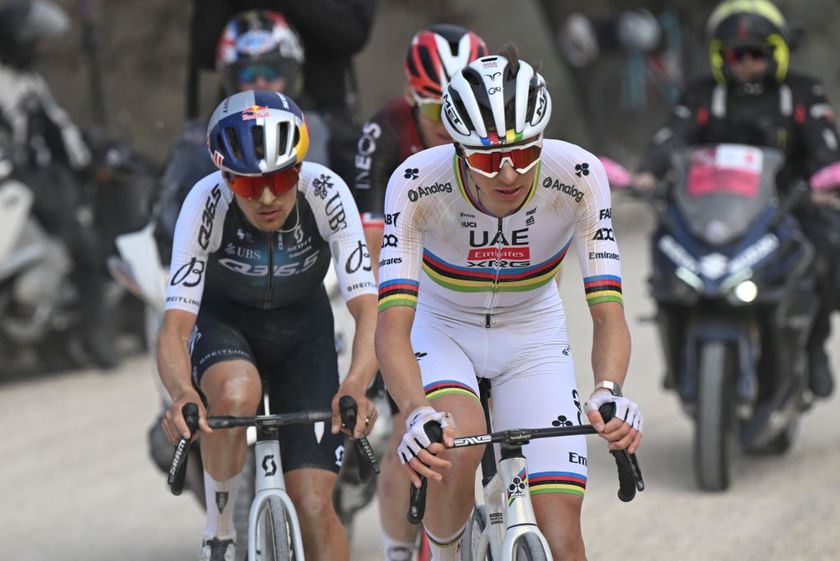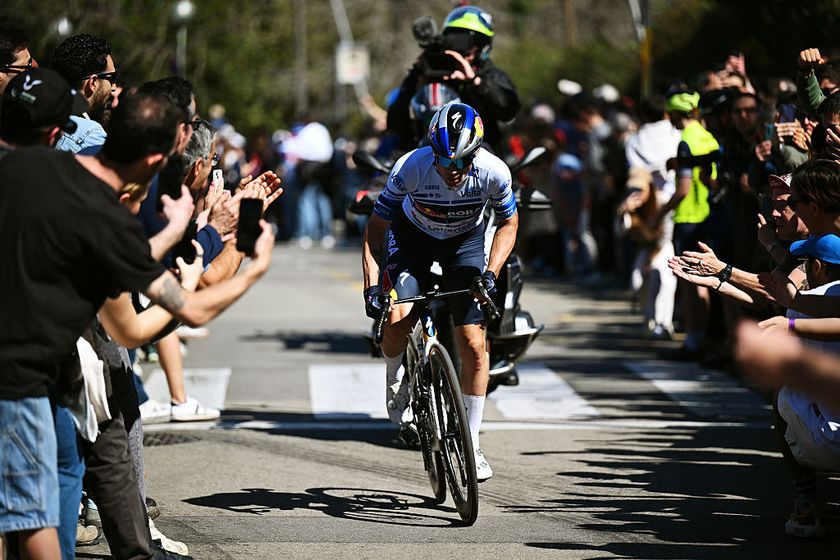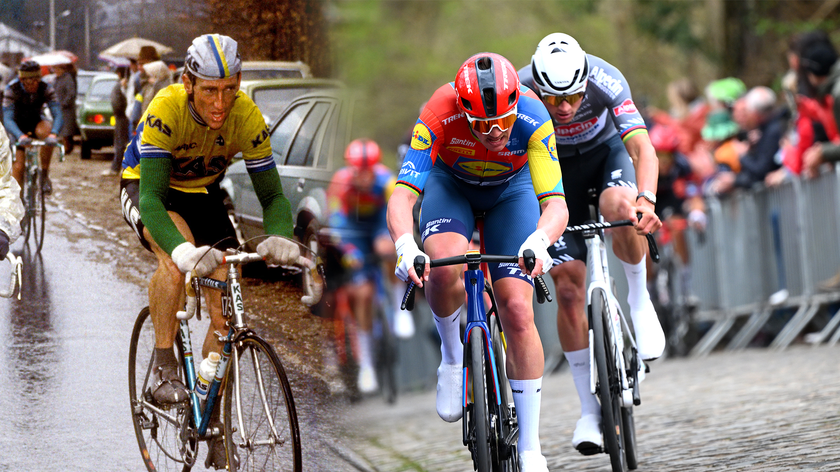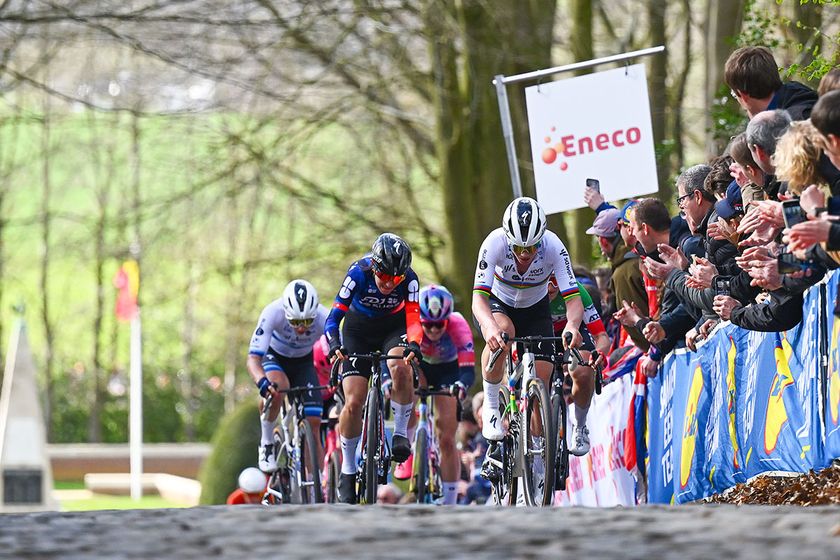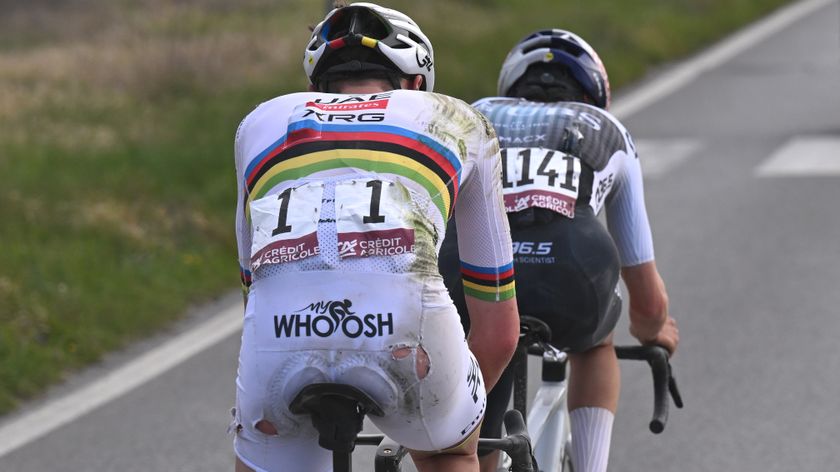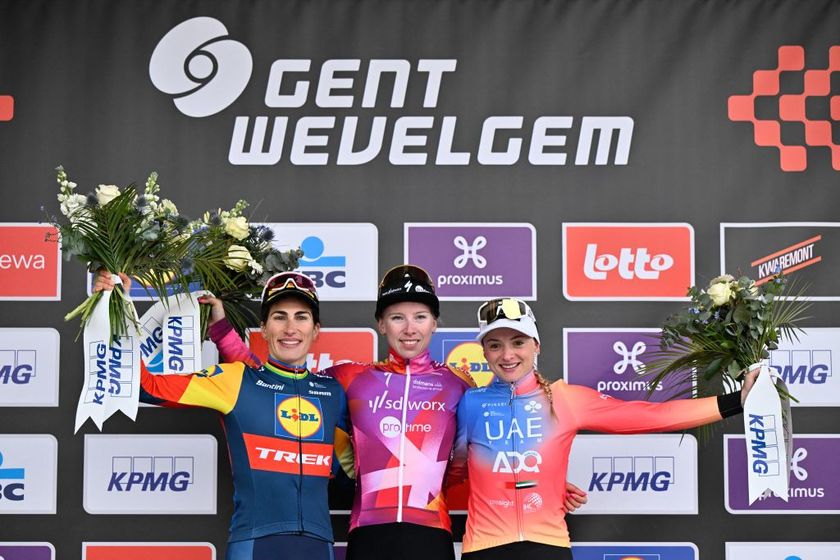Tech: Inside the workshop of Kappius Components
Seeking instant engagement, and a perfect bike




















This article originally published on BikeRadar
You won’t find Rus Kappius scowling very often.
An engineer by trade, Kappius operates his small cycling company Kappius Components operates out of his garage, sourcing a few parts like 3D printed pawls that he can’t make himself. Although his design has been scoffed at by some, including bigger companies, he labors on unperturbed, with a small but growing clientele serving as evangelists for his quick-engagement hubs.
Using carefully hollowed-out SRAM cassettes, the Kappius road and mountain bike hubs offer an abnormally wide bearing stance, near-instant pedaling engagement and a sobering pricetag of $1,000/£633 per hub set — plus $350/£222 to $400/£253 for a modified SRAM cassette.
Living in the foothills of the Rocky Mountains just south of Golden, Kappius is never more than a few minutes away from the singletrack that keeps him cheerful, fit and inspired.
BikeRadar visited Kappius to talk about his craft.
What is the premise behind the Kappius hub and cassette design?
Get The Leadout Newsletter
The latest race content, interviews, features, reviews and expert buying guides, direct to your inbox!
The Kappius hub came about in early 2008. I was installing my first SRAM PowerDome cassette and it hit me, "Why is that a big void under the cogs? That should be hub!"
From that point on I started getting very interested in hubs, as I immediately realized that modern designs were far from optimal. I sat down and sketched out what I thought was optimal. It looked very different from commercial offerings.
Throw in a few untimely hub failures and we get to where we are today.
I'm trying to maximize the enjoyment we get while cycling, because for all but the very select few, the amount of time we get to ride is less than we'd like. I want that time spent to be the best it can. For now that means better performing hubs that are simple, reliable and fast.
Your system has 1.5-degree engagement, right? How does that compare to other hubs on the market?
Yes, we have 1.5-degree engagement, or 240 points per rotation. As far as I know, we are the quickest of any pawl-based hub. Most hubs come in somewhere between 5-degree (Chris King) and 20-degree (DT-240) engagement angle.
When speaking about engagement angle, it's interesting that this subject didn't even capture my attention until I was well into designing hubs. I was much more interested in good bearing placement, optimal flange spacing, and simple designs. The quick engagement was almost a side effect of my work, which now is arguably the biggest selling point.
Also interesting: cyclists in the old days (1970 & before) generally enjoyed faster engagement than current riders. That's because the introduction of the freehub in the 1980s brought with it slower engagement. Better bearing placement was possible, but the engagement system moved from the old external freewheel to inside the hub, and that ended up, in general, slowing down the engagement speed.
The holy grail of engagement is zero delay. I had a very well known large manufacturer tell me that "our engineers thought your engagement angle was too small." Say what? I don't tolerate a delay in the drivetrain in my car, why should I tolerate a delay on my bike?
When you use hubs with very quick engagement like the Kappius hub, you start to feel delays and "slop" in other parts of the drivetrain. Some day I'd like to fix those problems too.
When did you first start?
I first walked around Interbike with a Styrofoam model in September of 2009, trying to sell the concept. Boy was that interesting. The concept was easy enough to grasp, but the ramifications were a bit too much for most. For companies with a good chunk of market share I understand that it's hard to introduce these "dump the apple cart" changes. Since Kappius Components has about zero market share we don't carry that risk. We're hoping people understand our drive to make bikes better, and the Kappius Hub helps us do that.
Those 3D printed pawls, what was your cost on them again? $250 for one wheel's worth?
Yes, developing a new drive system is not a cheap undertaking. Using Digital Metal Laser Sintering (DMLS) costs us about $250 per wheel to get the drives made. The good is that we can make small changes to the design without retooling costs, the bad is that it's not a cost that can come down with larger quantities. You have to change to a different technology. We're now getting to the volume of orders that we can investigate these alternative approaches.
We are continuing to refine the hub. We are using angular contact bearings from Enduro for 2013, and have increased our cogset ratios and offerings. We are compatible with SRAMs new XX1 11speeed 10-42. Without any change to the hub, a rider can use a SRAM 9 speed cog, a XX1 10 speed cog, or an 11 speed XX1 cog. Slip off, slip on.
What else do you have in the works?
We have some other exciting things going on at Kappius Components but it's a bit too soon to talk about them. We'll give you the scoop as soon as we can.
Kappius Components exists because we believe that bikes aren't perfect, at least in how they are made. But they are the most beautiful form of transportation. Our work to refine them isn't done.
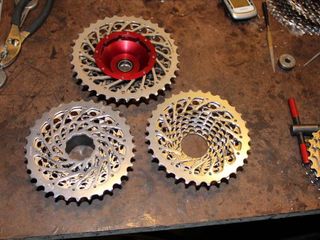
Three stages of a SRAM cassette. The completed version at top slides onto the hub drive ring
